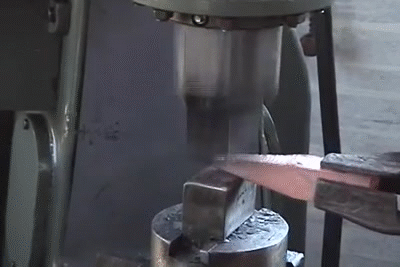Air-Lift Hammers are modern drop hammers, which also derive their force from a free falling ram. The hammer uses compressed air to lift the ram then lets it fall by gravity similar to the board drop hammer. The ram is lifted by a steel rod connecting it to the piston. A separate air circuit operates a clamp which holds the ram in a raised position between the strokes. A series of short and long-stroke blows can be obtained and the operator does not have to regulate the stroke heights. Program control is present to control the force and the number of blows at each die station. This automation can materially increase the production rate.
These hammers can make up to 50 to 75 strokes per minute depending on their size. Due to lower maintenance costs, and easier operation, air-lift hammers are replacing board hammers.

Comments
Post a Comment